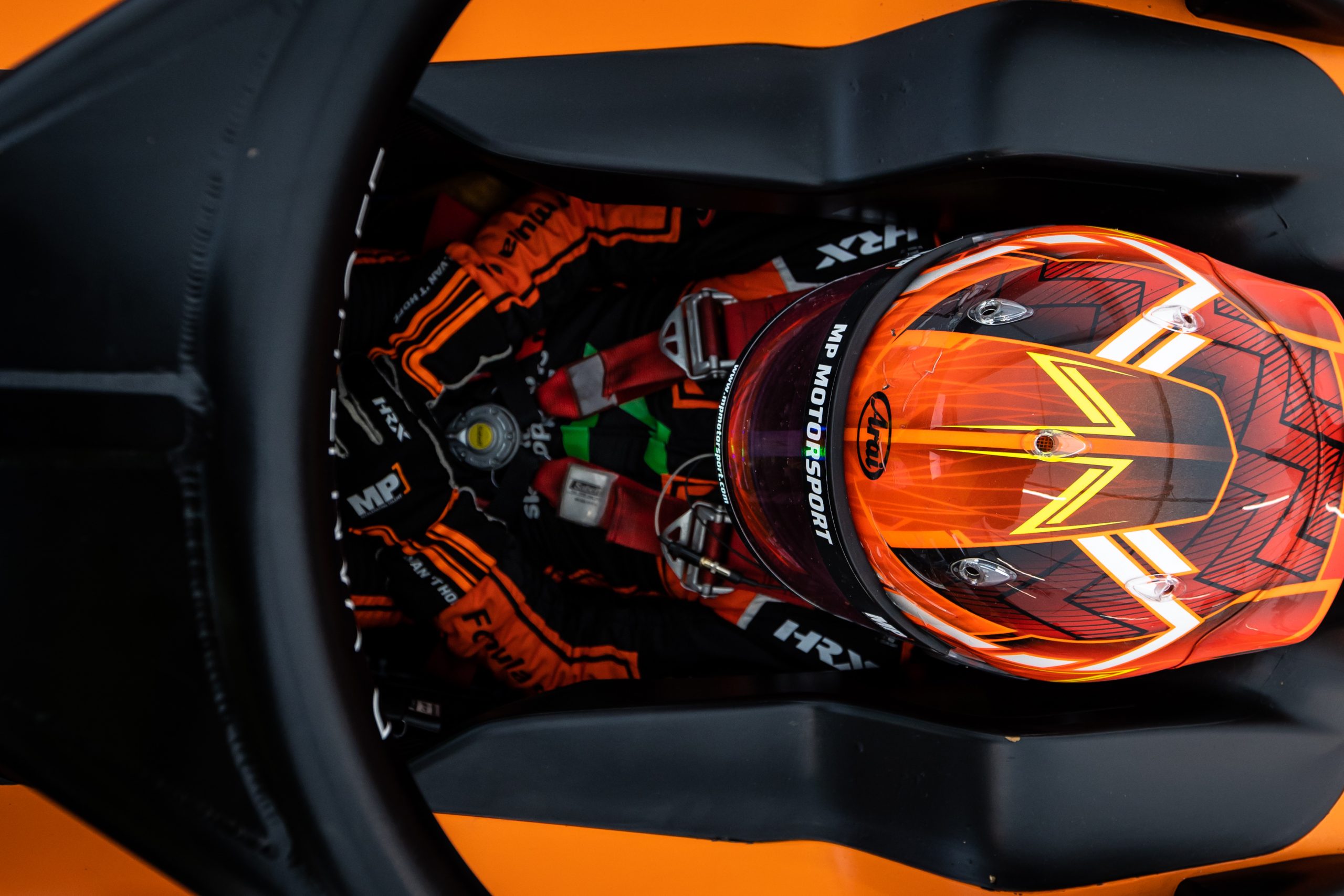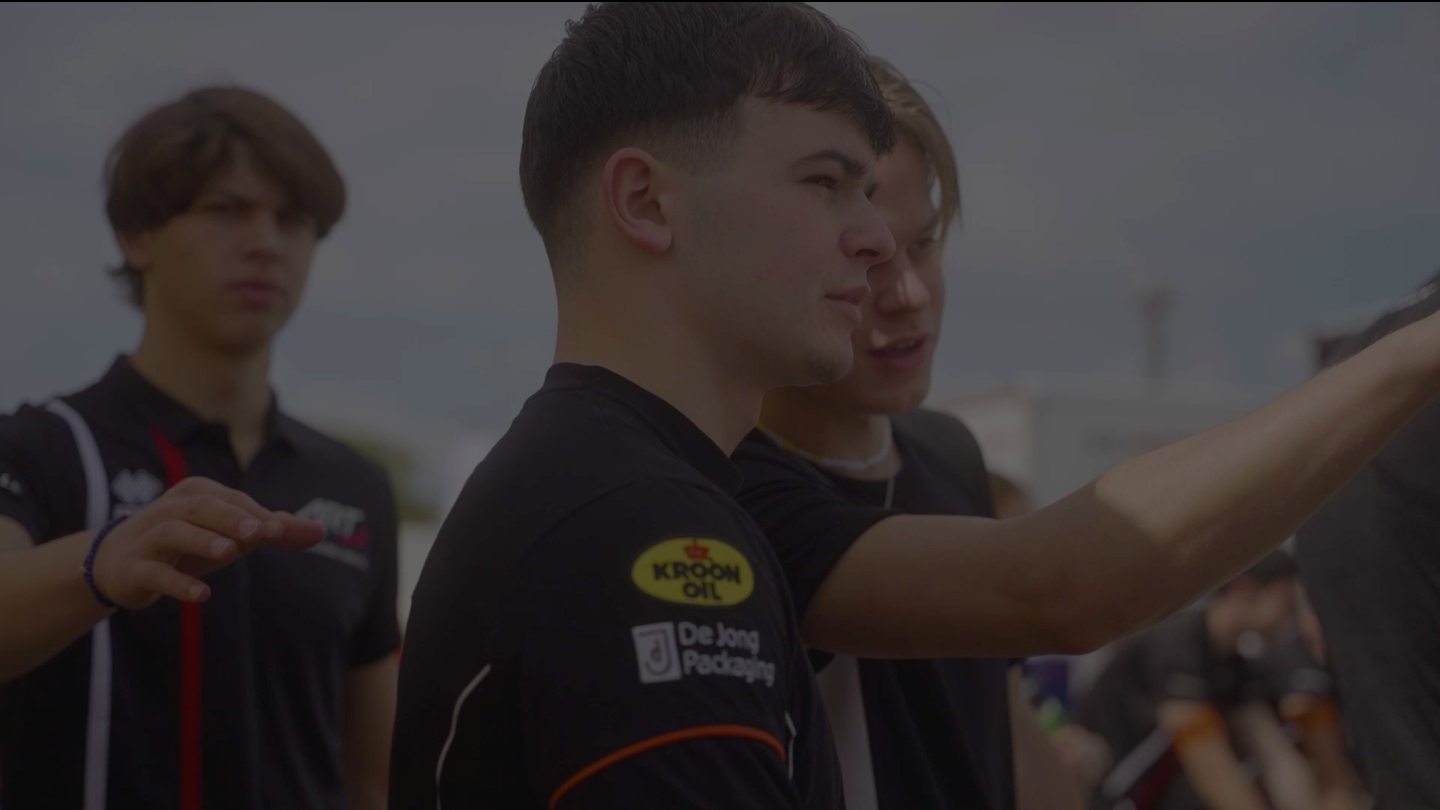
Welcome to the Racing for Dilano foundation
about us
Built on resilience. Driven by a mission.
In honor of the legacy of Dilano van ’t Hoff.
IN MEMORY OF A REMARKABLE TALENT
When an injury sidelines a driver, everything comes to a standstill. Racing for Dilano ensures that young motorsport drivers do not get lost in the gap between setback and comeback. Too often, talents are left on their own after an injury or crash, without guidance, alignment, or the right support.
The origin of the Racing for Dilano Foundation
I am Esther Schuller, founder of the Racing for Dilano Foundation and mother of Dilano van ‘t Hoff. This foundation arose from personal experience. As both a parent and a professional, I have seen firsthand how vulnerable a young talent is without a solid safety net during recovery. In top-level sports, the quick, specialized, and alligned support required to safely and sustainably bring young drivers back to their level is often missing.
Dilano’s talent, perseverance, and injury
Dilano was an exceptional racing talent, with boundless perseverance and a promising future. In 2022, he suffered an injury that immediately put his racing career under pressure. After surgery, he began a recovery process that was formally medically supervised and seemed manageable, but in which physical strain, strength development, and mental sharpness were not well aligned. After just fifteen days, he was back in his race car in Monaco, even though his body had not yet fully recovered.
From the very beginning, we as parents stood by Dilano and ensured he received the guidance he needed. Already after Monaco, he was able to see a sports physiotherapist from the karting world who immediately made time for treatment, while his mental coach remained in contact to support him and keep him focused.
A fragmented recovery with complications
The recovery was fragmented and slow. Six months later, during a race weekend in Barcelona where Dilano still managed to secure a podium finish despite ongoing pain, his mental coach took him to the hospital after the race for new X-rays. These revealed that a screw in the metal plate had broken and the bone had not healed.
Further examinations, including X-rays, MRI, and CT scans, eventually showed that multiple screws had broken and the bone was still unstable. Conventional healthcare offered no speed: weeks-long waiting times delayed crucial decisions, while Dilano remained under pressure to make progress and keep up in the competition.
The role of specialized medical expertise and rapid action
Thanks to the network of a surgeon friend of my father, we were able to get a second opinion from a trauma surgeon who specializes in shoulder injuries and also serves as a team doctor in professional cycling. Within a week we were able to see him, and the following week Dilano underwent surgery. He immediately identified the core problem: the material used in Dilano’s collarbone was not strong enough to withstand the forces generated in motorsport, such as the 4G peaks during acceleration and cornering. During the procedure, it was revealed that the metal plate was completely loose and the bone had been severely weakened by a hospital-acquired infection.
Restarting recovery
Dilano had to stay in the hospital for two weeks, and the recovery process began anew. These complications could have been detected and prevented earlier, highlighting the importance of speed, specialized expertise, and top-level sports insights in the recovery process.
A loss that changes everything
On July 1, 2023, Dilano lost his life during a race at Spa-Francorchamps in heavy rain. Raidillon, the fast and very steep section of the track, has a 17% incline and overcomes a height difference of more than 40 meters. Visibility here is almost zero due to wheel spray. While Dilano adjusted his speed for the yellow flag, he was hit from behind by another car, which damaged his gearbox. He lost control, spun, and came to a stop across the Kemmel Straight, where he was fatally struck in a second collision.
This tragic accident highlights how crucial safety and real-time information are for drivers and underscores the importance of a steering-wheel marshaling system, allowing all Formula 3 drivers to adjust their speed simultaneously in dangerous situations.
The motorsport world reacted in unison. All over the world, Racing for Dilano stickers appeared on helmets, karts, and race cars, a powerful sign of respect, solidarity, and remembrance. The loss of my son is heart-wrenching, but it has made one thing clear: it has to be different. Young talents should never be left as vulnerable as he was.
DILANO’S LEGACY
Racing for Dilano supports young drivers with coaching, personal training, and performance support, helping them grow stronger both physically and mentally, and continue developing their resilience, focus, and racing intelligence for a safe and successful comeback. Our approach aligns with the realities of top-level sport and addresses what often goes unseen. Recovery for young athletes goes beyond physical strength: injuries affect both their sporting identity and personal identity, impact their self-esteem and autonomy, and add layers to the recovery process that physical guidance alone cannot resolve.
Dilano’s example forms the foundation of our approach, with attention to both the sport and the individual. For those who did not know Dilano personally, this video provides a glimpse of his resilience and determination. Racing for Dilano keeps his passion and example alive, offering young drivers the safety net that Dilano himself so urgently needed.
Keep Racing for Dilano





